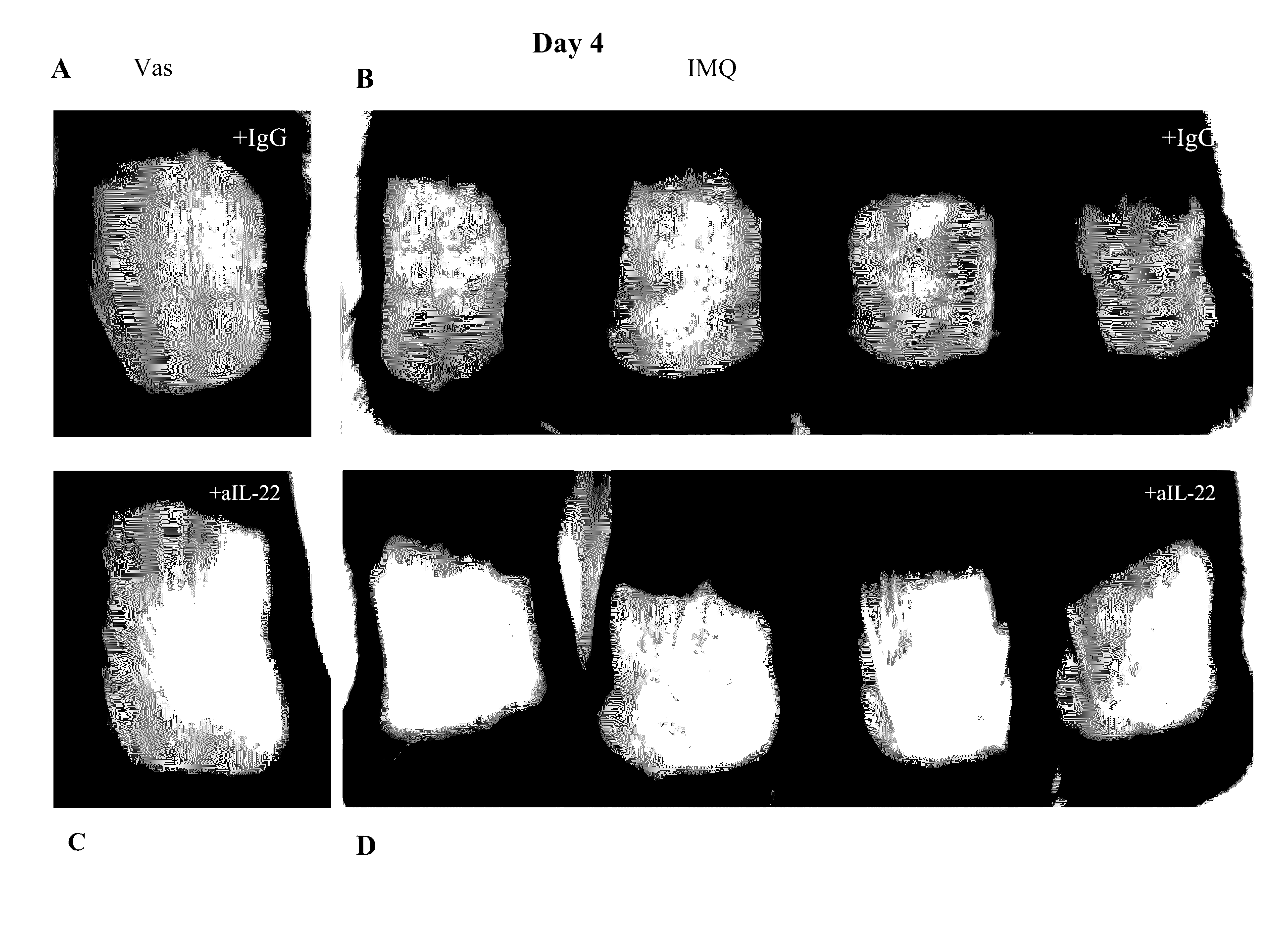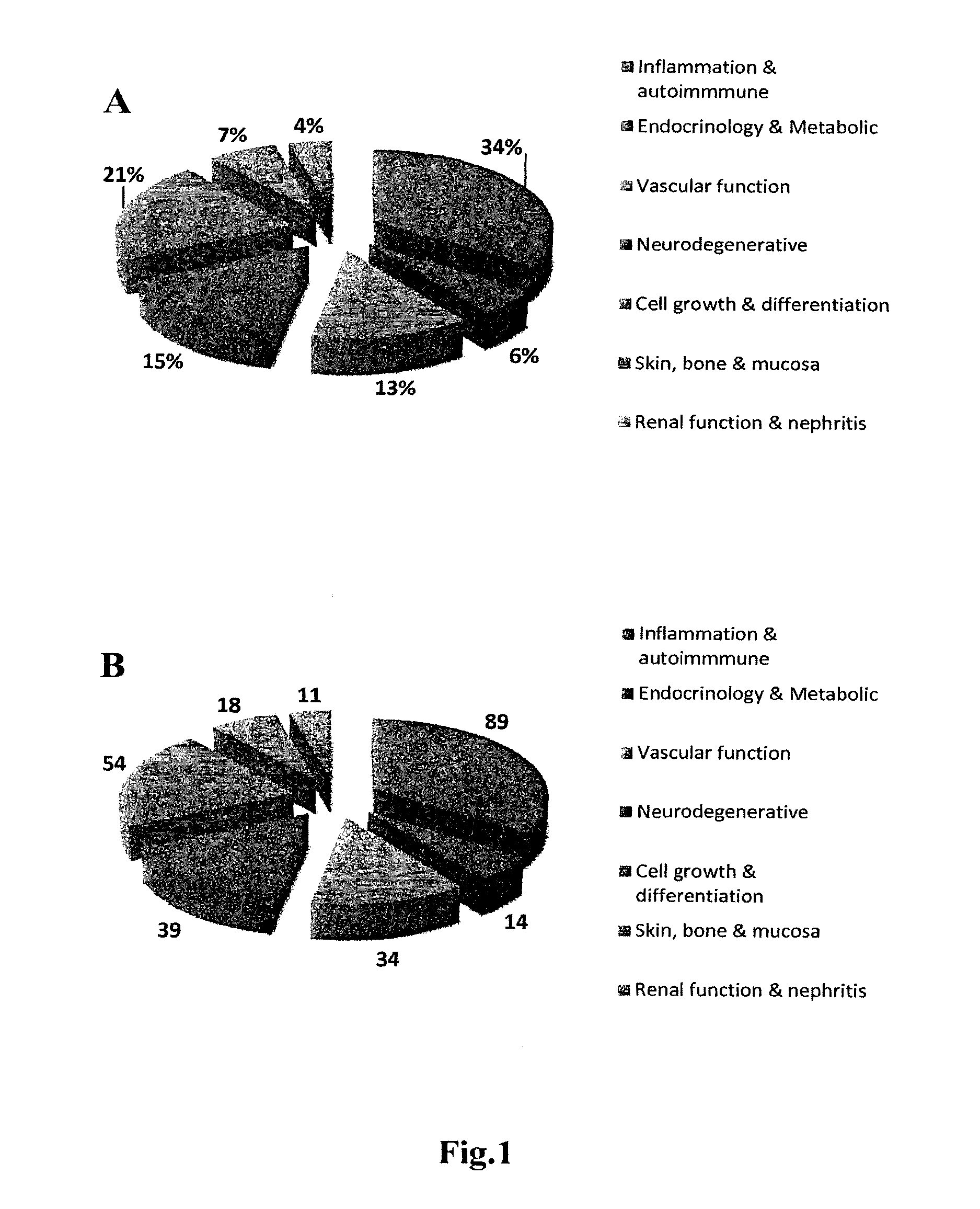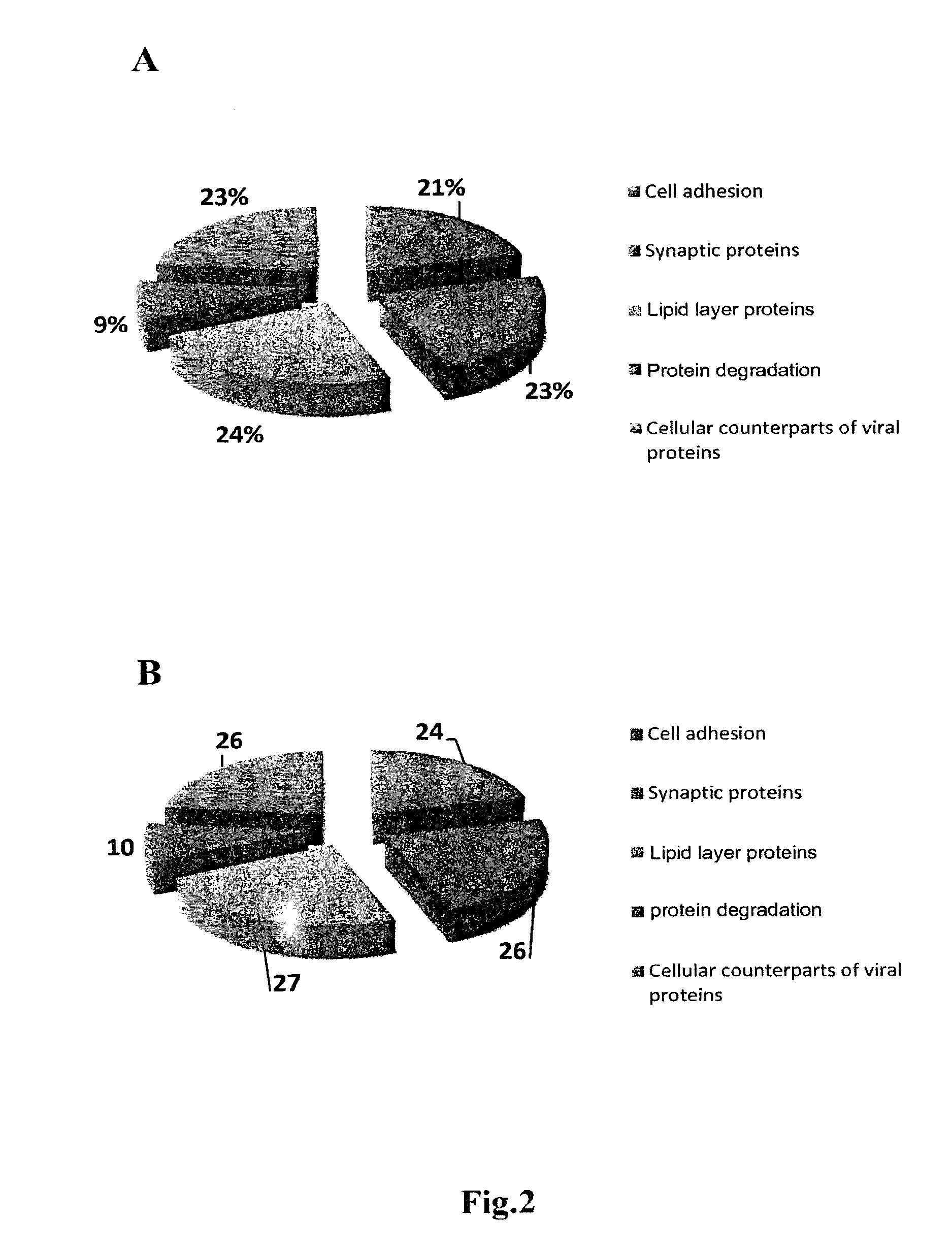Method of providing monoclonal auto-antibodies with desired specificity
a monoclonal antibody and specificity technology, applied in the field of new mammal binding molecules, can solve the problems of stressful symptoms of the involved organism, inability to communicate with immune cells, and inability to provide il-22 with symptoms, so as to achieve safe and effective therapeutics, high affinity neutralizing monoclonal antibodies
- Summary
- Abstract
- Description
- Claims
- Application Information
AI Technical Summary
Benefits of technology
Problems solved by technology
Method used
Image
Examples
example 1
Isolation of Human Peripheral Blood Mononuclear Cells (PBMC) from APECED / APS1 Patients
[0429]As starting material for the cloning of fully human antibodies, human lymphocytes were used obtained from the peripheral blood of 23 voluntary Finnish patients with Autoimmune polyendocrinopathy candidiasis ectodermal dystrophy (APECED, OMIM 240300), also called autoimmune polyendocrine syndrome type 1 (APS1). These volunteers were recruited for the blood donation through the Finnish APECED and Addison patient association. All patients gave their written informed consent and the study has been approved by the Medicine Ethical Review Board of the Joint Authority of Helsinki and Uusimaa hospital district. APECED is an autosomal recessive disorder caused by mutations in the AIRE (autoimmune regulator) gene, located on chromosome 21 (21q22.3) and APECED is prevalent in Finland (1 / 25,000) because of a founder effect. APECED patients present with various endocrine autoimmune dysfunctions including ...
example 2
Molecular Cloning of Human Antibodies Specific to IL-17 or IL-22
[0430]Preferably, antibodies specific to IL-17 or IL-22 were isolated by molecular cloning of immunoglobulin genes obtained from single-cell sorted cells derived from short term oligoclonal cultures of activated memory B cells producing the antibodies of interest.
[0431]Memory B cells were isolated from PBMC derived from the peripheral blood of voluntary Finnish patients with APECED with a one step protocol using phycocrythrin-conjugated mAb anti-human IgD, APC-conjugated mAbs anti-human IgM, CD3, CD56, CD8 and FITC-conjugated mAb anti human CD22 (Becton Dickinson, Basel, Switzerland). Cell sorting was carried out using a MoFlo XDP cell sorter (Beckman Coulter). CD22-positive- and IgM-, IgD-negative B cells were stimulated with EBV containing supernatant obtained from B95-8 cells (in B cell medium containing RPMI 1640 supplemented with 10% fetal calf serum). Cells were seeded in IMDM medium supplemented with CpG 2006 at ...
example 3
Antibody Production and Purification
[0434]Transient gene expression of human antibodies is achieved upon transfection of antibody expression vectors into 293-T human embryonic kidney cells or Chinese Hamster Ovary cells (CHO) using the Polyethylenimine Transfection method (PEI, Polyscience Warrington, USA). After transfection cells are cultured in serum free medium (OPTI-MEM I supplemented with GlutaMAX-I Gibco). Supernatants are collected after 3-6 days of culture and IgG is purified using protein A columns (GE HealthCare, Sweden) on a fast protein liquid chromatography device (FPLC) (GE HealthCare, Sweden).
PUM
| Property | Measurement | Unit |
|---|---|---|
| homogeneity | aaaaa | aaaaa |
Abstract
Description
Claims
Application Information
 Login to View More
Login to View More - R&D
- Intellectual Property
- Life Sciences
- Materials
- Tech Scout
- Unparalleled Data Quality
- Higher Quality Content
- 60% Fewer Hallucinations
Browse by: Latest US Patents, China's latest patents, Technical Efficacy Thesaurus, Application Domain, Technology Topic, Popular Technical Reports.
© 2025 PatSnap. All rights reserved.Legal|Privacy policy|Modern Slavery Act Transparency Statement|Sitemap|About US| Contact US: help@patsnap.com



